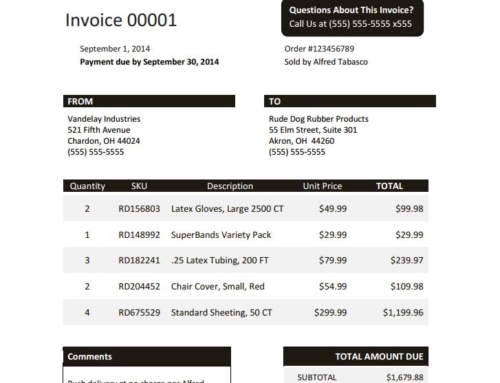When you allow customers to purchase on a line of credit, there is always a risk associated. You could struggle to collect the payment for months, the customer may choose to never pay at all forcing you to go to court or the customer could go bankrupt leaving you without payment. Extending credit doesn’t have to be a completely terrifying experience, however. As long as the right precautions are made to minimize risk, your company should be set to extend credit safely and continuing cash flow.
Following these steps can help ensure effective risk management while increasing cash flow.
ENFORCE TRANSPARENCY
If you are extending to a new customer, you will have to build trust first. For any new customers or customers that have a shaky past on payments, insist that you can have a full view into their financial statements. You can monitor your customer’s cash flow statements and projections to let you know if they are headed down a path to nonpayment. You can stay proactive with them to make sure no matter what happens to their business, you’ll always get paid.
RESEARCH MARKETS
Understand the industries that your customer’s work in. If they are in construction, understand lien rights. If they are in shipping, understand bills of lading and freight costs. Having a better understanding of the industries your customer’s operate in give you a better understanding of how to talk to them about payments and know your rights to payment. If a customer operates in a different country, look up the legalities and customs associated with collecting in that country.
SELECTING PARTNERS
There are lots of solutions and services available on the market to help businesses reduce their risk in extending credit. There are credit monitoring solutions, which can alert you when a customer dips below a certain threshold for their credit score. There are automated accounts receivable software which can help you to prioritize your AR follow ups with customers. Even traditionally, when using a debt collection partner or legal advisor, make sure you are choosing your partners wisely.
UNDERSTAND COSTS
Obviously, if you are unable to collect on an account, you will lose out on money. However, there are a lot of hidden costs associated with risk management that many businesses forget about. Make sure that you aren’t over extending the business on these soft costs, such as onboarding and training, legal fees and new software to aid in the collections process.
EXPECT THE UNEXPECTED
No business goes into the day hoping for a crisis to occur. However, every business should be planning for one to happen. Most often, it’s not if an issue will occur, but when. This could be as minor as rush delivery requests or as complicated as losing a huge client. Being prepared with a possible plan in place is the best way to handle these situations with minimal risk.
When it comes to cash flow, the largest asset for any organization, there is no overkill for preparing and responding to risk. Without proper cash flow, it doesn’t matter how many sales you make, you simply won’t have enough cash to operate the business. By using these steps, you can act proactively to ensure all customers pay on time.




